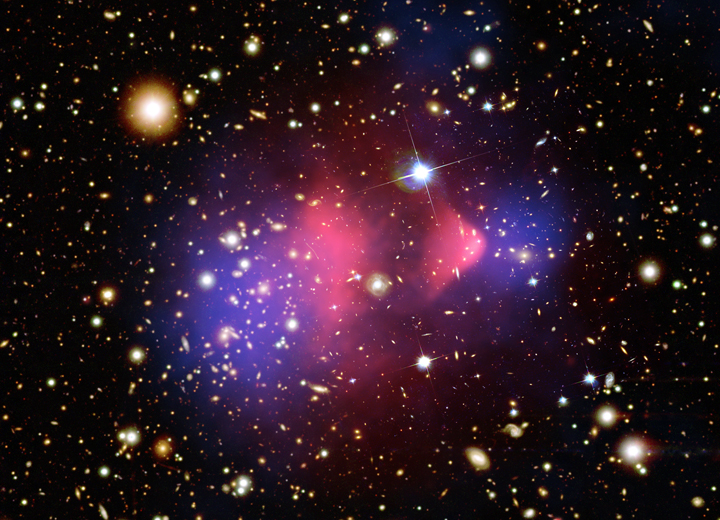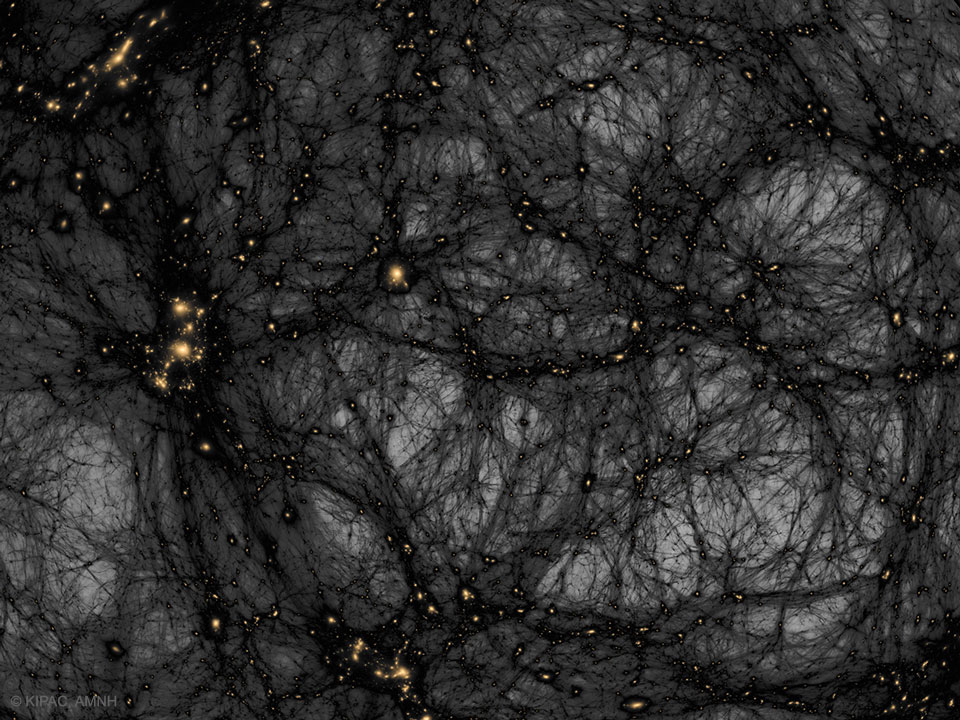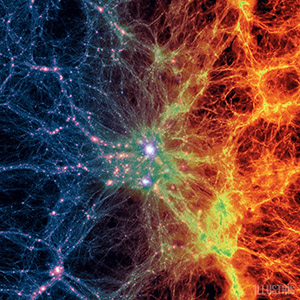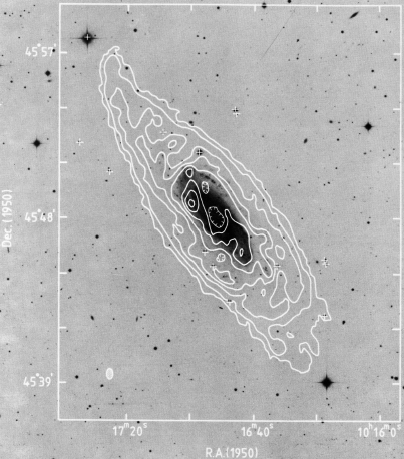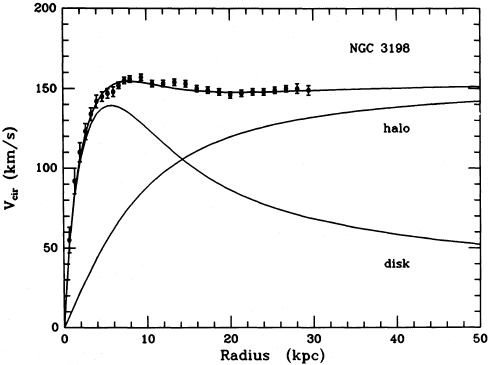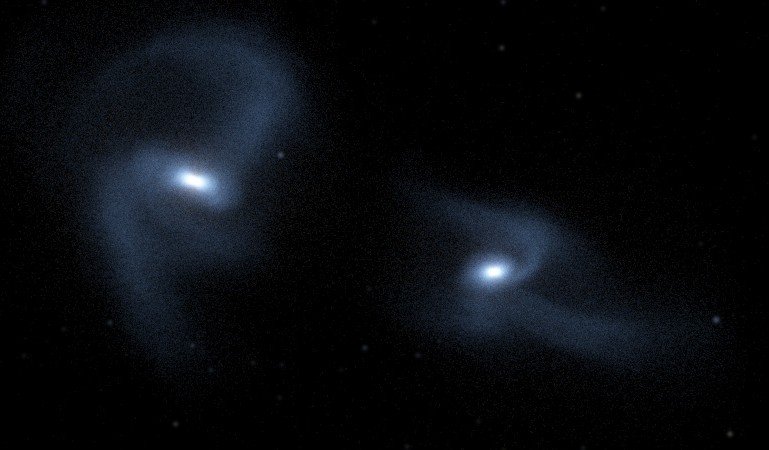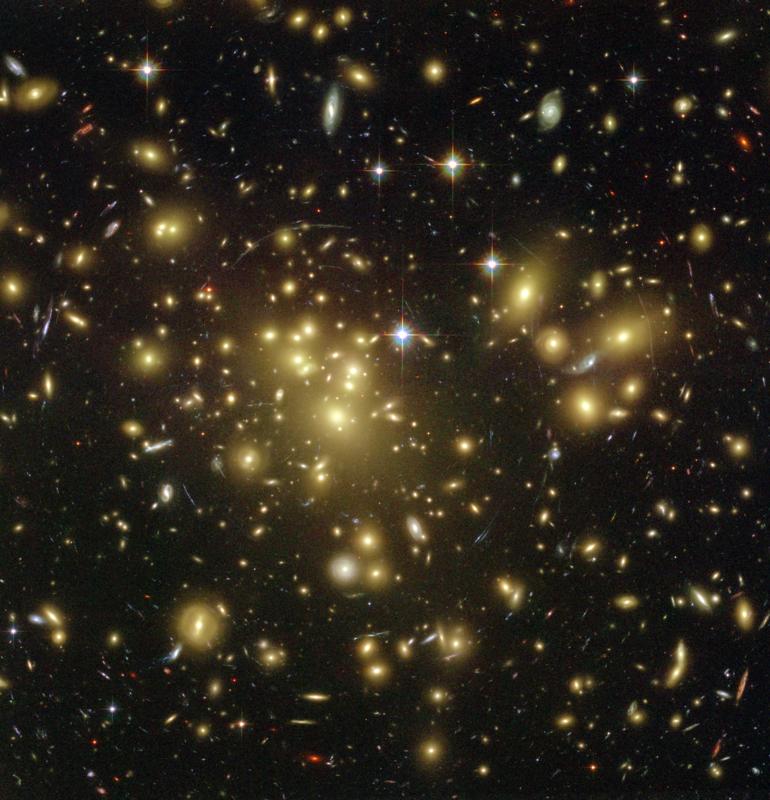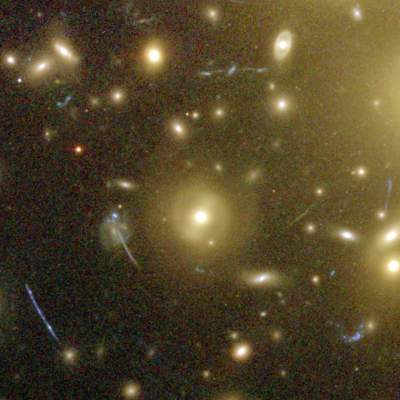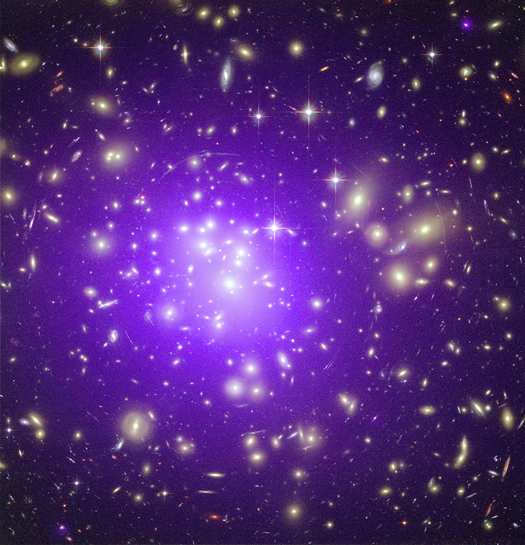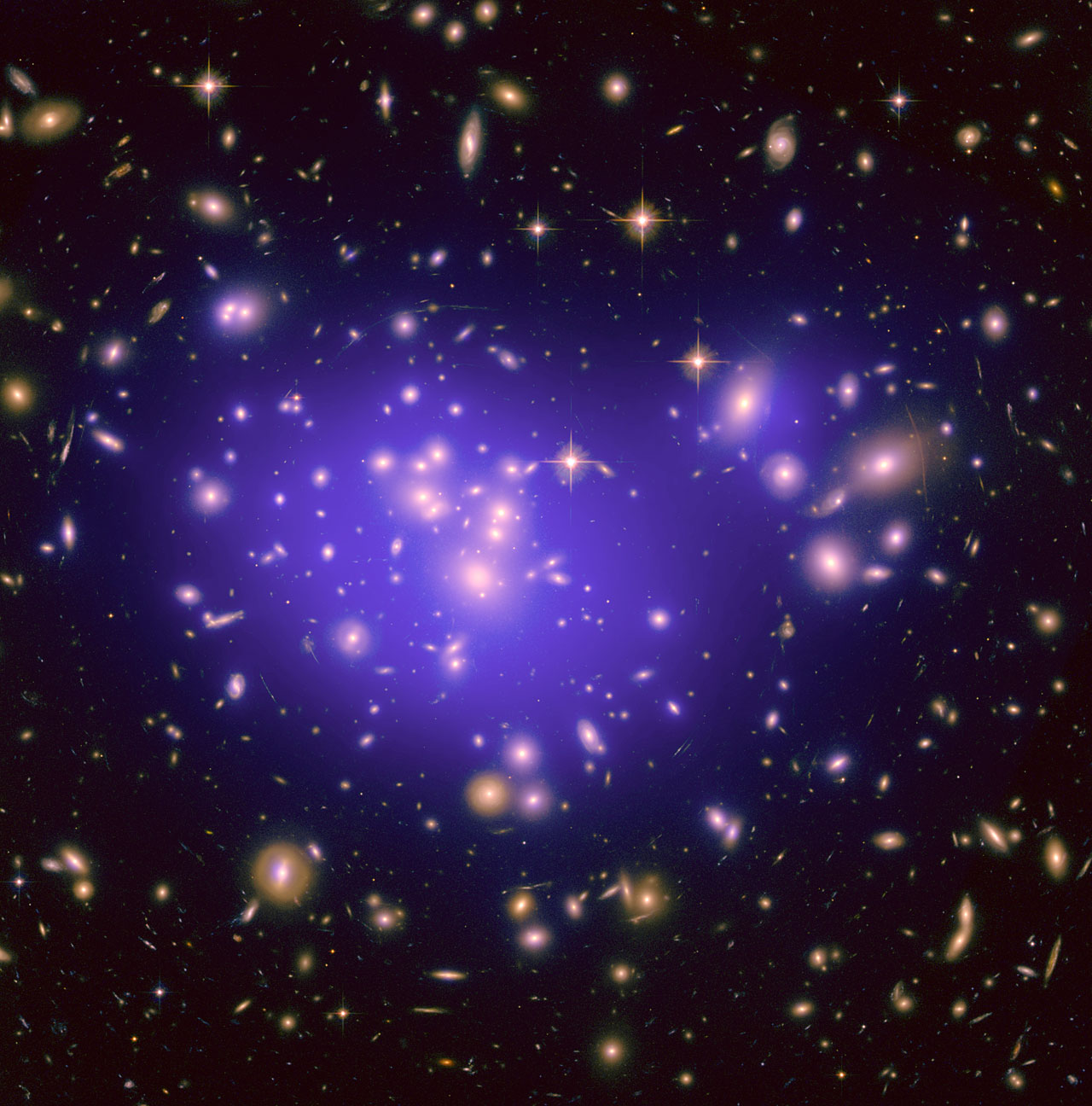|
Composite optical and x-ray (purple) image of the Coma cluster of galaxies.
The Coma cluster at redshift 7,000 km/s
is a rich cluster containing about a thousand galaxies.
The x-rays trace smoothly distributed hot (~108K) gas
that extends throughout the cluster.
The x-ray image shown here has been enhanced to bring out
variations in the emission.
Most of the baryonic matter in the cluster is in the hot gas,
not in the visible galaxies.
The mass of the cluster can be estimated
both from the velocity dispersion of the galaxies,
and independently from the temperature of the x-ray emitting gas.
As much as 90% of the mass is unobserved dark matter.
(Chandra, XMM-Newton, Sloan Digital Sky Survey).
|
